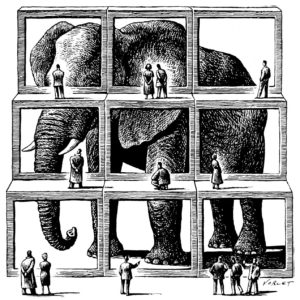Customers, Curiosity, and Context

As the voice of the customer, Sales, Success, and Support each play an important role in helping a startup understand what its customers want.
The challenge is that customers want all sorts of things, and the companies serving them often lack the context to understand even simple requests.
Without context, requests are likely to be ignored—or worse yet, misunderstood. To get more customers to their desired outcomes, customer teams need to identify (and communicate) why customers want what they want.
The challenge for customer teams
Product teams think in terms of problems. Your product will only be as good as your product team’s understanding of the problem.
Customers speak in terms of solutions—in terms of things that they imagine will solve their problem. It’s rare for anyone to explain their underlying goals without prompting.
For a startup seeking product/market fit, customer teams must not only help their customers understand the product, but also interpret requests in a way that helps their companies learn and iterate faster.
How to think about and respond to requests
Digging beneath surface-level requests requires knowing what to look out for.
“How do I do xyz?”
When a customer asks how to do something, look out for the XY problem. It arises when someone has a particular objective (“X”), imagines a solution (“Y”), then asks about “Y” without ever mentioning “X.”
If a how-to question sounds at all fishy, respectfully ask for the underlying objective:
“Can I ask what you’re ultimately trying to accomplish? I want to make sure I give you good advice.”
Knowing the underlying objective may reveal an easier pathway to the customer’s desired outcome—saving you and the customer time.
“I need feature xyz.”
Behind almost every request is some other job to be done. To paraphrase Theodore Levitt, “people don’t want a quarter-inch drill; they want a quarter-inch hole.” Buying a quarter-inch drill is just one pathway to some other desired outcome: the “quarter-inch hole.”
When you send a feature request verbatim to your product team, it won’t help the customer right away and it could very easily be lost in a sea of similar requests. In other words, it won’t get the customer any closer to their desired outcome.
To truly help the customer, you have to dig beneath the surface and figure out what the underlying objective is:
“To make sure I understand you correctly, you’re saying that you want to [XYZ]. If we built this functionality, what would you be able to do that you aren’t able to do today?”
Each quarter-inch hole has additional requirements (“One hole, or one thousand? Drywall, wood, or metal?”). Most quarter-inch holes lead to some other desired outcome (quarter-inch holes → wall mounts → wall shelving → more storage space → less clutter), with different measures of success (cost, convenience, personal accomplishment, etc.). To satisfy as many customers as possible using as few resources as possible, a good product manager needs a lot of context.
Customer teams don’t need to gather as much context as a product manager does, but they have a lot to gain by digging at least one “why” deep:
- There may be an existing pathway to the customer’s objective.
- There may be a more feasible pathway to the desired outcome—one that’s more likely to be prioritized.
- The request may connect with seemingly unrelated ones, making a stronger case for solving the underlying need.
Sharing customer context helps everyone move faster
Probing for context requires more time and effort, but the payoff is huge. It helps customers get immediate value from your product. It helps customer teams be stronger advocates for the customer. And most importantly, it helps startups learn faster. The faster your startup learns, the sooner you have a business.
